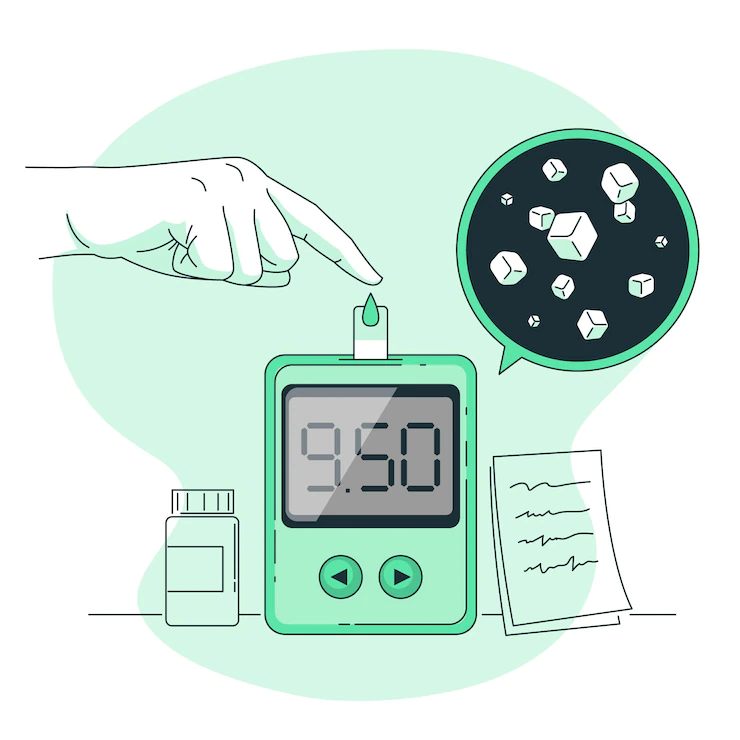We are so busy in our life that sometimes we forget about ourselves. We are becoming robots forgetting to live our life, which directly affects our health. In addition, our thoughts are also slowly becoming negative, indirectly affecting our concentration and health. And then it will be visible in our behavior. Let’s begin a journey towards calmness. Even a few minutes of meditation can do miracles.
Meditation is simple. It is a technique that involves focusing on breathing for a designated amount of time. It has many surprising effects on our health. In addition to contributing to your overall health, it can give you a sense of calm, peace, and balance.
Diabetes can affect your eyes, heart, nerve, feet, kidneys, and metabolism. Any type of stress can increase the blood sugar level of a diabetic person.
TYPE 1 VS TYPE 2 DIABETES
High blood sugar leads to diabetes. The pancreas produces the hormone insulin, which helps in the transport of blood glucose into your cells for use as an energy source. In addition to insulin, glucagon also regulates blood sugar levels. Immune system attacks and destroys cells that create insulin. Consequently, your pancreas stops making insulin. In the absence of insulin, glucose cannot enter your cells, resulting in an increase in blood glucose levels. Individuals with type 1 diabetes take insulin daily.
You can take care of yourself by following your diabetes meal plan, exercising, and monitoring your blood glucose regularly.
Diabetes type 2 is the most common type. Type 2 diabetes occurs when your body doesn’t produce enough insulin or doesn’t use insulin properly. As a result, too much glucose remains in the bloodstream, and not enough reaches the cells.
Type 2 diabetes can develop at any age but it is more common after 45 yrs of age, if someone in your family has diabetes or you are overweight. Type 2 diabetes can be managed by a healthy (active) lifestyle and a balanced diet.
The benefits of meditation include:
- Stress reduction
- Self-awareness
- Helps you stay focused
- Patience and creativity
- Lower blood pressure
- Improves sleep quality
People who can meditate may be able to manage symptoms of conditions such as:
- Chronic pain
- Cancer
- Anxiety
- Asthma
- High blood pressure
- Depression
- Sleep problems
HOW TO MEDITATE?
Meditational Components are –
- One of the most crucial aspects of meditation is generally being able to focus your mind. You may free your mind from the numerous distractions that lead to stress and worry by focusing your attention.
- In order to breathe more effectively, relaxed breathing involves deep, even-paced breathing that uses your diaphragm muscle to expand your lungs.
- Start meditation in a quiet place, if you are a beginner.
- Do not give judgment on the thoughts that come to mind.
EXAMPLES OF BREATHING EXERCISES
Sit comfortably on the floor. Count to five as you inhale. Exhale and again count to five. Repeat the procedure several times.
- Focused Breathing- The focus of concentration meditation is on a single point. It can be a visual image (a picture of a flower or flame of a candle), a sound, or a feeling.
- Slower Breathing- Inhale and Exhale slowly. Exhalation is linked to the parasympathetic nervous system, while inhalation is more connected to the sympathetic nervous system. So when you increase exhalation, you will become calmer.
- Deep Breathing- Deep Breathing allows you to breathe in more fresh air and relieve shortness of breath by preventing air from getting trapped in your lungs.
- Diaphragmic Breathing- The main muscle used for breathing is the diaphragm, which is situated underneath the lungs. It is a large, dome-shaped muscle that frequently contracts automatically and regularly. During inhalation, the diaphragm flattens and tightens, and the chest cavity widens.
For Diaphragmic Breathing:
- With your knees slightly bent, lie on your back on a flat surface. Place your head on a pillow, you can also use a pillow under your knees for support.
- Then put one hand on your belly and the other on your chest.
- Inhale slowly through your nose. The hand on your tummy should raise, while the one on your chest should remain still.
- At least two to three times as long as you inhale, exhale through your mouth.
- You can gradually extend your inhale and exhale intervals from 2 seconds to 4 seconds and beyond. You should practice a few times per day for 5 to 10 minutes.
Regular meditation should be done for better results. The practice of meditation reduces stress, blood sugar levels, and cardiovascular disease risk in people with diabetes.
WHAT ARE THE BENEFITS OF MEDITATION?
- Regular meditation reduces your stress level.
- Life becomes more stable when you meditate.
- You become more balanced in your life. As a result, your imagination improves.
Our expert provider at Specialty Care Clinics will assist with the best treatment from pain management to diabetic care. If you or anyone you know have diabetes, connect with us at 469-545-9983




